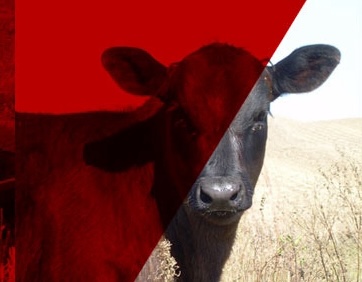Most are familiar with sorghum-sudangrass, a popular warm-season annual known for its high yield. But one of its parents, sudangrass, often gets overlooked. That’s a shame because sudangrass can be a great option for summer grazing.
With thinner stems and more leafy growth, sudangrass is less prone to brittleness and breakage than sorghum-sudan. It also tillers more aggressively, which supports better regrowth during grazing. As a heat-loving warm-season grass, it thrives during the summer slump of cool-season pastures.
Performance and Grazing Potential
For optimal production, the recommended seeding rate is 20 to 25 lb/ac. Sudangrass is usually ready to graze about 40 days after planting. For example, we planted after grazing cereal rye in late May and began grazing sudangrass the first week of July. Under rotational grazing (3–4 day moves across four paddocks), we achieved 3 AUM/ac over two months in eastern Nebraska.
Sudangrass is also relatively drought-tolerant. While it still needs moisture to germinate, once established, it can continue to produce with limited rainfall. If it catches a rain at planting, it will often—but not always—produce a usable forage crop, even under dry conditions. This makes it a valuable option in years when rainfall is uncertain and pasture growth is limited.
We’ve grazed sudangrass with both cow-calf pairs and stocker steers:
- Cow-calf pairs (1 pair/ac):
Cows maintained condition during peak lactation. Nursing calves, turned out at ~70 days of age, gained 2.5 lb/day while grazing. No issues with rebreeding were observed. - Stockers (1.6 steers/ac):
Steers had previously grazed cereal rye and weighed ~880 lb at turnout. Despite their size, they still gained 1.6 lb/day on sudangrass.
For comparison, cows grazing smooth bromegrass over the same period lost some condition, and their calves gained 2.1 lb/day—slightly less than those on sudangrass.
Tips for Getting the Most Out of Sudangrass
Nitrogen Management Is Essential. Sudangrass responds well to nitrogen and requires adequate fertility for high yields. We recommend applying 80–100 lb/ac of nitrogen total, split between two applications. For example, apply 40–50 lb/ac at planting, and the remainder in 8 to 10 weeks to maintain regrowth and quality into late summer.
- Start grazing early. Early grazing stimulates tillering and improves regrowth. Start grazing when plants are about 15 to at most 24 inches tall, and don’t be afraid to graze hard the first time—down to 3 inches—to encourage tillering. Subsequent grazings should leave about 6–8 inches of residual. Sudangrass grows fast; if you think it’ll be ready in a week, it’s probably ready in a few days.
- Don’t let it get mature. Immature sudangrass can be extremely high in quality. Forage at 2.5 feet tall tested at 63% TDN and 20% CP in late July. But like other warm-season grasses, quality drops rapidly with maturity.
- Use rotational grazing. A quick rotation with high stocking density helps maintain quality and increases utilization. Ideally, divide the field into 3 to 4 paddocks, each sized for 3 days of grazing. Last summer, a 4-paddock system supported 1 cow/calf pair per acre for 60 days, with 15 or more inches of regrowth within 10 days of grazing.
Grazing Management to Reduce Prussic Acid Risk
While sudangrass has lower prussic acid potential than sorghum-sudangrass, it’s not risk-free. Avoid grazing until plants are at least 15 inches tall, and never graze immediately after a frost or during drought stress. After frost, wait 7 to 10 days before turning cattle back in. If you're unsure, a simple field test can help assess prussic acid levels. For more information on when and how to graze safely and how to use the quick test, check out this article on Avoiding Prussic Acid Poisoning.
Bottom Line
Sudangrass is a flexible, productive, and high-quality summer forage, especially when managed well. Start grazing early, keep it vegetative, apply adequate nitrogen, and use rotation to maintain quality and regrowth. In dry years, sudangrass’s ability to grow on limited moisture makes it a valuable backup when cool-season pastures fall short.
For producers needing reliable warm-season grazing, sudangrass might just be worth a second look.
Article by Mary Drewnoski, Nebraska Extension Livestock Specialist.

